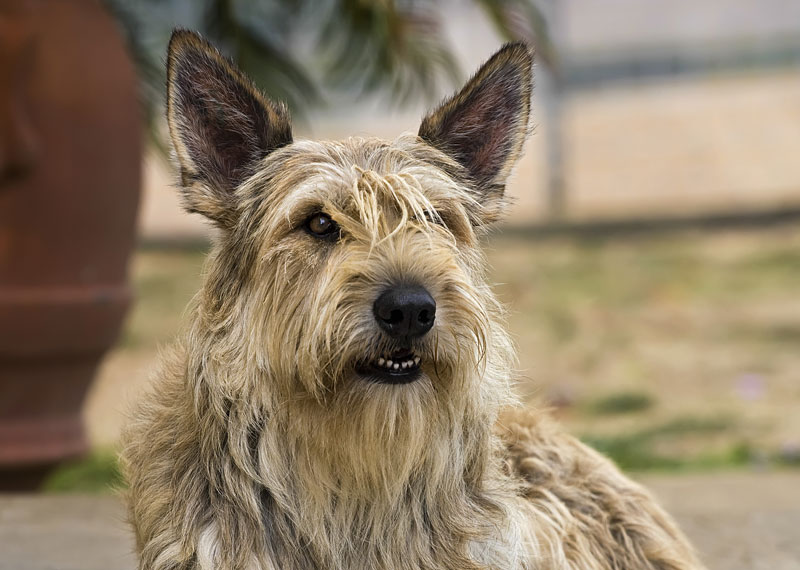The Berger Picard (pronounced 'Bare-ZHAY Pee-CARR') or Picardy Shepherd is a France breed of dog of the herding dog group of
breeds. These dogs nearly became extinct after both World War I and World War II and remain a rare breed to this day. This breed of dog is people-oriented, loyal, and can make a good family pet if properly socialized early in life.
The producers of the 2005 American movie Because of Winn-Dixie brought five Picards over from Europe ("Scott", "Laiko" and "Tasha" performed in the movie). The trainer wanted a dog that resembled the scruffy mutt on the original book's cover but needed several that looked alike so that production could continue smoothly, thus he decided on this rare purebred dog from France.
It is this breed's rustic mutt-like appearance that has prevented it from being rapidly popularized and exploited in the United States by the movie release, as has been the fate of some other breeds. People are often fooled into thinking "Winn-Dixie" is a mixed breed.
Like any breed of dog, the Picardy Shepherd is not for everyone, and much thought must be devoted to choosing the right dog. As more Picard puppies are imported into the U.S. from France and other countries, it is important that owners and future breeders remain responsible; they will determine the fate of this breed in the United States. In 2006 the was formed to help promote and protect this breed. The Berger Picard will be fully recognized in the herding group by the American Kennel Club on July 1,2015.
History
Thought to be the oldest of the French Sheepdogs, the Berger Picard was brought to northern France and the Pas de Calais, in the 9th century by the Franks. At the February 2012 Meeting of the American Kennel Club Board of Directors, the Board voted to move the Berger Picard into the Miscellaneous Group effective January 1, 2013. At the April 22, 2014, The AKC Board voted to approve a request from the Berger Picard Club of America to 1) approve the breed standard submitted as the official breed standard for the Berger Picard breed,2) move the Berger Picard from the Foundation Stock Service into the Stud Book of the American Kennel Club on June 1, 2015, and3) approve the Berger Picard to compete in the Herding Group, effective July 1, 2015.
http://images.akc.org/pdf/board_minutes/0414.pdf
The Berger Picard is a recognized breed by the Canadian Kennel Club. It is in the Herding Group, Group 7. The Standard for this breed is available through the Canadian Kennel Club, Group 7 breed standards. The National breed club is http://www.bergerpicardclubcanada.com/ Berger Picard Club Canada.
Health
Berger Picards due to lack of over breeding are a relatively healthy breed. Hip dysplasia (canine) is known, as are several eye disorders, including progressive retinal atrophy or PRA. A reputable breeder will have hips certified by the Orthopedic Foundation for Animals or by PennHip with the results posted on the OFA database found at http://offa.org/search.html?btnSearch=Advanced+Search Eyes will be certified for hereditary diseases through the OFA as well (previously through the Canine Eye Research Foundation) and results should also be published on the OFA database. The Berger Picard also participates in the Canine Health Information Center. http://www.caninehealthinfo.org/brdreqs.html?breed=BEP To obtain a CHIC number, dogs must have their hips and eyes checked with the results published on the OFFA website and their blood banked for DNA plus one elective, either elbows, thyroid or heart evaluated.
The breed's life expectancy is 12 to 13 years.







